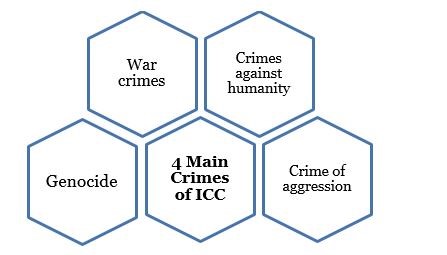|
One Liners 11-02-2025
|
|
History, Art and Culture
|
|
Pandit Deendayal Upadhyaya
- Born in - 1916 in Nagla Chandrabhan village, now Deendayal Dham, UP.
- Deendayal Upadhyay is an Indian politician, one of the most important leaders of the Bharatiya Jana Sangh, the forerunner of Bharatiya Janata Party.
- Started monthly magazine "Rashtra Dharma", weekly "Panchajanya", and daily "Swadesh".
- His mantra for the journalism was ‘Don’t distort the news’.
- Books - Samrat Chandragupt, Jagatguru Shankaracharya, Political Diary, Integral humanism, Ekatmamanav - vad and an analysis of the Five Year plans in India.
- In 2019, PM unveiled a 63 feet statue of Pandit Upadhyaya at the Pandit Deendayal Upadhyaya Memorial Centre in Padao on the Varanasi.
|
|
Polity & Governance
|
|
Scholarships for Young Achievers Scheme (SHREYAS)
- Initiated by- Ministry of Social Justice & Empowerment.
- Offers scholarship - Programs for (SC), (OBCs) & Divyangjan.
|
|
SHREYAS for Scheduled Castes
- Central Sector Umbrella Scheme which comprises 04 sub-schemes.
- Sub-schemes
- Top Class Education for SC students (TCS)
- National Fellowship for Scheduled Caste students (NFSC)
- National Overseas Scholarship for Scheduled Castes (NOS)
- Free Coaching for SC and OBC Students (FCS)
|
|
SHREYAS for OBC and Others
- Central Sector Umbrella Scheme which comprises two sub-schemes namely
- National Fellowship for OBC, Scholarship scheme.
- Dr.Ambedkar Central Sector Scheme of Interest Subsidy on Educational Loans for Overseas Studies for Other Backward Classes (OBCs) and Economically Backward Classes (EBCs).
|
|
Scholarship for Students with Disabilities (Divyangjan)
- Implemeting Agency - Department of Persons with Disabilities.
- Comprises 6 sub-schemes
- (a) Pre-Matric (b) Post-Matric (c) Top Class Education (d) National Overseas Scholarship (e) National Fellowship for PwDs and (f) Free Coaching Scheme.
- It does not come under SHREYAS.
|
|
Hostel Facilities under Pradhan Mantri Anusuchit Jaati Abhyuday Yojana (PM-AJAY)
- It is a Centrally Sponsored Scheme since 2021-22.
- 3 main parts
- Adarsh Gram’,
- ‘Grants-in-aid for District/State-level Projects for Socio-Economic betterment of Scheduled Caste (SC) Communities’, and
- ‘Hostel.
- Objectives - To improve socio-economic developmental indicators in the SC dominated villages.
- To reduce poverty of the SC communities by generation of additional employment opportunities.
- To increase literacy and encourage enrolment of SCs in schools and higher educational institutions, especially in the aspirational districts/ SC dominated blocks and elsewhere in India.
|
|
Scheme for Promotion of Culture of Science (SPoCS)
- Implementing Agency - National Council of Science Museums (NCSM), an autonomous organization under Ministry of Culture
- Aim - To establish Science Cities, Science Centres, Digital Planetarium, Innovation Hubs across the country.
- It established the above ones based on the proposals received from different State Government and UTs.
|
|
Pradhan Mantri Annadata Aay Sanrakshan Abhiyan (PM-AASHA) scheme
Government recently approved the continuation of the PM- AASHA during the 15th Finance Commission Cycle up to 2025-26.
- Aim - Provide remunerative prices to the farmers for their produce and also controlling price volatility of essential commodities by ensuring their availability at affordable prices to consumers.
- Components - Price Support Scheme (PSS), Price Deficiency Payment Scheme (PDPS), Market Intervention Scheme (MIS) and Price Stabilisation Funds (PSF).
- Ministry - Ministry of Agriculture & Farmers Welfare.
|
|
International Relations and Issues
|
|
Dunki Routes
- “Dunki” or “donkey journey” refers to the long-winding, often dangerous routes that people across the world take to reach the places they want to immigrate to.
- These difficult journeys are undertaken due to a lack of requisite legal permits or financial resources.
- The American authorities recently deported those who have taken this illegal route to reach America.
|
|
Security
|
|
Hindustan Jet Trainer (HJT) Renamed ‘Yashas’
HJT 36, the flagship training aircraft of HAL has been renamed ‘Yashas’, unveiled at Aero India 2025.
- Aim – To Enhance improvised training effectiveness and operational efficiency.
- Upgrades
- Stage-II pilot training, counter-insurgency and counter-surface force operations, armament training and aerobatics.
- Powered by - FADEC controlled AL55I Jet engine, providing best in class thrust to weight ratio, optimised thrust management and reliability.
- A stepped up rear cockpit provides excellent all-around vision and enhanced situational awareness with multi-function displays (MFDs) and head-up displays (HUDs).
- Capabilities - Stall and spin, aerobatics, armament carriage up to 1,000 kg, single point ground refuelling and defuelling.
|
